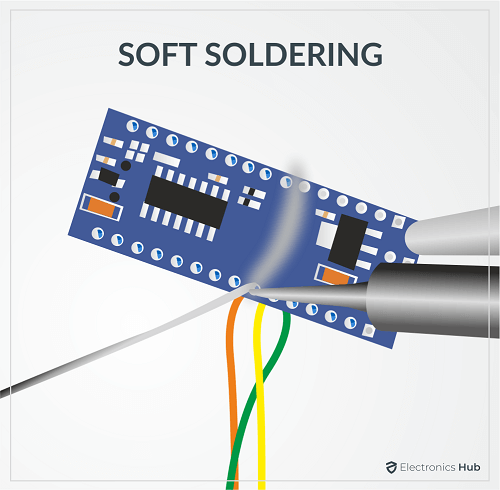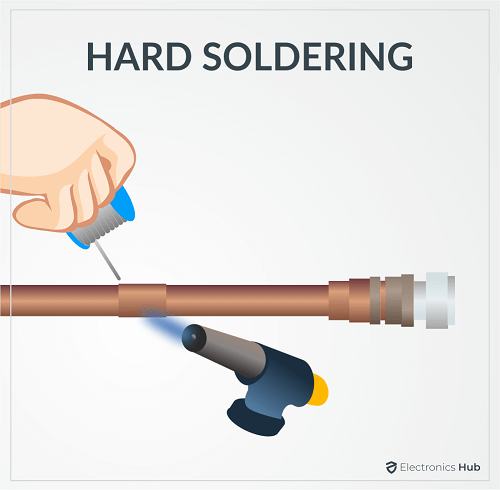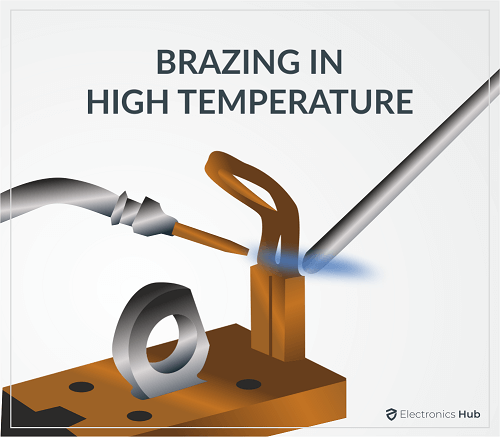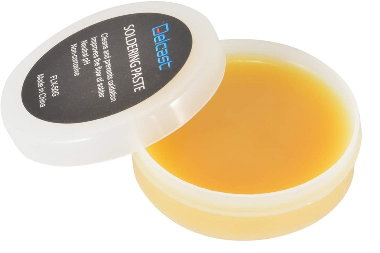What is Soldering?
Soldering is a process of joining two different types of metal by melting solder. It is used for creating a permanent form of a fixed connection between any electronic components. Solder is a metal alloy, which acts as the main filler element to make electrical connection as well as git it the mechanical strength. Soldering is actually a simple process. You can Solder an electronic component by melting tin-lead solder using a hot soldering iron. Soldering creates permanent connections on circuit boards and copper joints. The metals that are used in soldering are lead-based solders like brass, copper, and tin. Soldering is necessary to create a connection, which can allow an electric current to flow.
Types of Soldering
Soft Soldering
This method is generally used in electronics and plumbing. It creates an electrical connection and connects electronic components in circuit boards. In all the soldering systems, it is the process in which the lowest metal melting point is what everyone uses.
Types of soldering fluxes Types of solder Brazing vs soldering Welding vs soldering
The fillers are generally the alloys, which often contain lead with melting temperature of about 350-degree Celsius. The lower temperature creates a strong joint while the high temperature creates a less strength and melts the bond.
Hard Soldering
Hard soldering forms a strong connection as compared to the soft soldering. The material that is used in this is usually silver or brass. To strengthen the connection, it requires a blowtorch to increase temperature and melt the main metal that is used to create a strong joint, called as base metal. It gets heated in a point to create a durable joint as it gets cool. It should be used with silver solder while joining parts of brass or copper.
Brazing in High temperature
This type of soldering acquires a higher melting point if one compares it to the hard or soft soldering. The material needs to be heated sufficiently to get the best outcome.
Flux in Solder
The flux core is what you can say a coil or a wire, which is used at the site as a reducing agent. Flux is something that is released at the time of soldering (Flux Core Solders). It reverses the oxidation of metals at a particular site of contact to give a clear electrical connection.
Uses of Soldering
There are many ways to utilize soldering. The composition of solder depends on the application. For example- Tin is a component, which they use in the electronic solder, roofers, and sheet metal. Here is the list of uses of soldering:
Solder in Metal Gutters: A gutter system in your home is very crucial. So if you have a metal gutter in your home, the sections of it were connected or attached by soldering. The joint of solder has been created to make a leakproof and permanent joint between two. Soldering for Electricians: Earlier mentioned, the solders create an electrical flow. With the help of soldering, you can guarantee the electrical flow in commercial or residential wiring. It is also a very useful tool to merge wires to terminals in the inner part of control panel or any electrical device. Solder in Auto Repair: Solder helps tighten the joints and smoothen the surfaces. Even though it cannot repair engines because of its strength, it can help in a few things. Soldering for Home Projects: Soldering tools can be very helpful when it comes to home projects like connecting circuit boards or repairs, which need a very large amount of heat and control. Soldering pencils or guns and irons are tools that you can use in your home. Soldering in Plumbing: Solders are a great tool when it comes to plumbing. The lead-free solder is best that one can use to attach copper plumbing pipes. There are tools like a soldering gun or a roofer’s soldering iron to increase the temperature rapidly when the joint area needs it.
How Does it Work?
Soldering may look like welding but it is very different. Welding is when one tries to create a super-strong joint between two pieces of metal. In soldering – it is about an alloy of different metals, which are in low melting point. Soldering is very necessary to create an effective electrical connection. One can join all the cables together and it will still not work, because when you perform soldering – it requires a complete and stable connection. One melts the solder over a joint by applying a hot tool – soldering iron. Solder is not however to create a mechanical connection. So you will need a solid mechanical connection and then soldering to create the good connectivity of electricity. In plumbing or jewellery, it works differently. Like, in plumbing – plumbers use solder to join copper pipes together in a permanent way, which creates a mechanical robust waterproof joint. In jewellery, it joins fine pieces of metal together to create a new design. The concept can still be the same but the process is very different. Mostly, they use hard soldering for it.
What Metals are Used?
In soldering, Filler metals are mostly used like lead solder but these days, mostly the lead-free solders are rapidly replacing the lead-based solders, which include – antimony, brass, bismuth, copper, tin, indium, or silver.
Understanding Solder Blends
The 3 materials that you will find in solder are – tin, lead, and flux. But there are numerous diversifications of solder, which you can find in the market that are based on any material’s relative ratio. Also, there are other metals and some additives, which you can add to give your solder certain unique properties like strengthening its conductivity. Like, Antimony, which enhances the mechanical strength and you also do not have to reduce the wet ability while securing a tin pest. Copper usually increases the wetting characteristics and reduces the melting point in any molten state. Silver gives you a robust mechanical strength. Though it offers low ductility than metals like lead, it can enhance resistance to the fatigue from those thermal cycles of any lead-free solder. Nickel is a solder alloy that can protect the Under Bump Metallization layer (UMB) from dissolution. The broad range of solder that blends could help you in finding the correct combination of characteristics for any electronic device. Solders usually melt within a particular range but a blend of eutectic melts at an exact degree.
Conclusion
In short, there are 3 types of solders – lead-free or without lead, lead-based, and flux. Lead-based solders are the most reliable and preferred in critical applications like medical, electronics, or aerospace. Lead-free solder is very easily available for flux soldiers and electronics. It contains a reducing agent at the core, which is released during the process of soldering. It eliminates oxidation from the site of bonding. The solders are generally what you can use in electric board or circuits but there are many functions of it. Hope this article will clear some of your doubts. Comment * Name * Email * Website
Δ









![]()